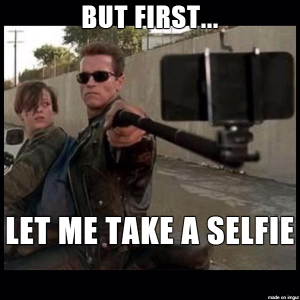I don’t know about you, but just about every resume I have ever read featured a few bullets about community work. But why do we, as employers, care? Because it shows the candidate is “well rounded?” Because it sheds some light on what matters to that person? Because it gives us something to ask about in the interview? Maybe all of those? But here’s a thought. Maybe that person who really “gives back” is also the one you’ve been looking for. This person, who takes time out of their busy life to do something for someone else, has revealed a couple of traits that may make them a stand-out employee.
Yah, but WIIFM?
We live in a very self-focused age, and it is very easy to get stuck in a “WIIFM” world view (What’s In It For Me). Selfies, social media, positive psychology…we spend a lot of time standing in our own personal spotlights. There are many benefits of being so blessed, as a society, with the luxury of worrying about “likes.” But with so few unmet needs, motivation can be a challenge. So, in this era of “me”, how do we engage employees in company vision, team building, or in times of extreme pressure to “get the job done?” The obvious answer is to pay them more, award bonuses, offer swag for showing up, serve free lunches…in short, give them something. However, there are employees that take a wider view, and accept that what is good for the whole is good for the one. They show up. Stay late. Coach their colleagues. Go the extra mile for a client. In short, they care. And not because they got a bonus or a sandwich.

So, how we find these gems of humanity? Pretty easily, actually. They are the champions out there giving back. Yes, there can be self-serving elements behind altruism…and that’s OK. In fact, I’d argue that there should be, for a truly sustainable win-win relationship. But if you can’t see the use in contributing to something bigger than yourself…you’re probably not getting up at 6 a.m. on Saturday to volunteer at a charity marathon. You’re not sitting in an impossibly small chair reading to a kid at an inner city school. And you sure aren’t giving up your lunch hour for diversity training, or to crush out a deliverable deadline. See the connection?
OK, but what can you do for me TODAY?
Even if we can get an apathetic employee to see the self-interest in being “a part of something” we also have the question of timing. They may think “OK, I get it. This is good for me too…but when?” This relates to the idea that someone will only take action when they see a clear line between what is asked and what they get back. The shorter that line needs to be for a particular person, the more challenging they will be to motivate and keep engaged. Let’s face it…most of the good things our careers take some patience and delayed gratification. The better that is understood by an employee, the more readily they will “buy in” on longer-term initiatives, support the company vision, and endure challenging periods. But when the proverbial carrot dangles from a stick that is seen as too long, short-sighted employees can become jaded and disengage when they don’t get a bite. Those are stepping stones to costly underperformance and turnover.

You’re probably thinking “great, but how do we tell if someone is a long-term thinker?” Well, community contribution is a great signal. No one serves a meal at a homeless shelter and expects poverty will be solved by the end of the shift. No one cleans up a park and assumes litter shall never again stain those grassy fields. No one canvasses for cancer assuming the cure is coming tomorrow. The people who invest time in those activities know that their contribution is part of something bigger. Something that is a way off, but worth pursuing. Now that sounds like the sort of long-lens you want in a star employee!
Get out the crystal ball…or not
So, social contribution reveals two highly valuable traits: a wider sense of contribution and patience. But do those few bullets on a resume really tell us all that much? And once they are hired, how can we know who these heroes are? This is where data can be incredibly useful. Until personal social impact profiles like those on GozAround become more wide-spread, there is an element of faith required. For now,I encourage you to take note of what a candidate has contributed to, ask about it in the interview, and give it weight. And when it comes to current team members, consider an employee social impact platform that encourages staff to log and share their contributions. Not only will this better inform your CSR decision making, but it will reveal your champions, leadership candidates, and who to appeal to on initiatives that may require that “longer lens.” After all, if they give a d@mn about the world, they just might about your company too!

